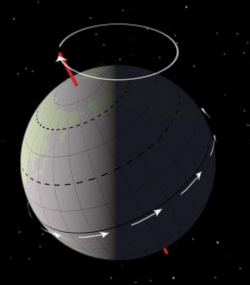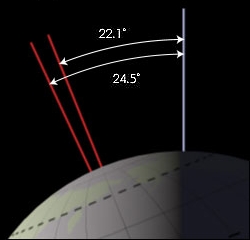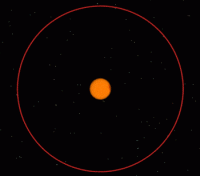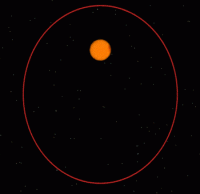Milankovitch Cycles Research
The Milankovitch cycles are variations in the earth’s climate that are responsible for ice ages and are caused by variations in the earth’s orbital eccentricity, axial tilt and the precession of the equinoxes in the present age.
Put forward by Milutin Milankovitch and others this theory of cliamte variation has become widely accepted in the last few decades as ice cores and other long term accurate climatic measurements became available and confirmed the presenece of these cycles.
The main cycles are:
 Precession of the equinoxes: The earth’s axial tilt rotates in space in a period of around 25,700 years. This rotation of itself has no effect, but in relation to the direction of the earth’s orbit it affects whether the extremes of annual variation happen in the northern or southern hemisphere. The northern hemisphere is more sensitive because of the larger land masses and the almost land-locked arctic ocean. The resulting cycles have periods due to the interaction of the precession cycle with the eccentricity cycle with components from about 19,000 to 26,000 years.The figure shows the earth’s axis slowly totaling in space. The precession of the equinoxes has been known since ancient Greek times or even earlier.
Precession of the equinoxes: The earth’s axial tilt rotates in space in a period of around 25,700 years. This rotation of itself has no effect, but in relation to the direction of the earth’s orbit it affects whether the extremes of annual variation happen in the northern or southern hemisphere. The northern hemisphere is more sensitive because of the larger land masses and the almost land-locked arctic ocean. The resulting cycles have periods due to the interaction of the precession cycle with the eccentricity cycle with components from about 19,000 to 26,000 years.The figure shows the earth’s axis slowly totaling in space. The precession of the equinoxes has been known since ancient Greek times or even earlier.

Variation in ObliquityThe earth’s obliquity or the tilt of the earth’s axis varies by several degrees over a cycle of 41,000 years although this is not a perfectly regular cycle. When the axis is tilted more, the seasons are stronger and so winters are colder and ice ages are more easily started.
The figure shows the range of the obliquity variation, from 22.1 to 24.5 degrees.


Variation in EccentricityThe earth’s orbit is elliptical, and the degree of departure from a circle is known as eccentricity. The diagrams show eccentricity of 0 and 0.5, however the variation in the earth’s orbital eccentricity is much more slight than this. When the orbit is more eccentric, this may cause a greater range of temperatures with the seasons in one hemisphere or the other depending on how the axial tilt is aligned with respect to the earth’s eccentric axis.
The primary eccentricity cycle is close to 100,000 years with a modulation of 400,000 years. The 100,000 year cycle is the main ice age cycle, but it is required that the other two shorter cycles come into sync with this cycle to actually start an ice age. For this reason ice ages happen about every 100,000 years with some variations.

Comparison of Milankovitch Cycles to ClimateThe graph shows the three Milankovitch variables and their component cycles in comparison to the actual climate over the last million years. Note that time runs from right to left in this graph. The calculated solar forcing at 65 degrees north is shown also.
The diagrams on this page have been taken from Wikipedia, the world’s largest encyclopaedia which is also free. Mostly they are from the page on Milankovitch cycles. For many more cycles links to Wikipedia see Index of Cycles in Wikipedia.